Follow Blog via Email
Join 1,623 other subscribersSupport the Peregrine Watch
-
Recent Posts
- Chicks showing on May 18-20… May 22, 2025
- Incubation begins… March 19, 2025
- Breeding big time… February 28, 2025
- Better late than never… February 10, 2025
- Morro Bay Winter Bird Festival 2025… January 28, 2025
June 2025 S M T W T F S 1 2 3 4 5 6 7 8 9 10 11 12 13 14 15 16 17 18 19 20 21 22 23 24 25 26 27 28 29 30 Archives
Details
Tags
- accident or injury
- artwork
- Bob Isenberg
- breeding
- brooding
- California
- California Polytechnic State University
- chicks
- Cleve Nash
- courtship
- Doris
- eagles
- education
- eggs
- falcon
- feeding
- gulls
- Heather O'Connor
- hunting
- incubation
- invaders
- juvenile
- mammals
- migration
- Morro Bay
- Morro Bay Winter Bird Festival
- Morro Rock
- other birds
- owl
- peregrines
- photography
- Piedras Blancas Lighthouse
- prey
- scholarship
- Shell Beach
- shorebird
- solstice
- stoop
- summer
- survival
- visitor
- vultures
- weather
- whales
- winter
Join us on Facebook
Author Archives: Pacific Coast Peregrine Watch
A first look around…
http://youtu.be/J-NoFQ_lNkc
Narration and videography by Bob Isenberg.
When we go out to search for the peregrines every day, we see this view of Morro Bay, California, USA with a few weather variations. We enjoy calm to blustery winds, bright sun or fogginess and variable temperatures. All delightful. There is a steady stream of people from all over searching for a view of these magnificent birds.
“Education though observation.” Heather
Posted in falcon, Morro Rock
Tagged falcon, Morro Rock, other birds, peregrines, photography, weather
Leave a comment
Pitched battle…
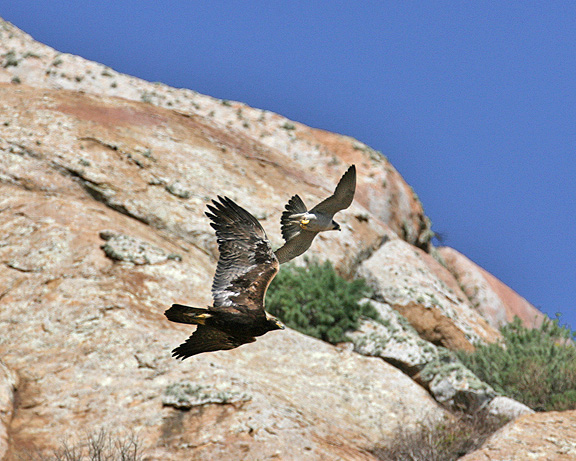
This is the seventh in a series of tales about the “famous and not-so-famous birds of Morro Rock.”
A little town about twelve miles north of Morro Bay called Cayucos, somewhat quaint, no stop signs or signal lights. The main drag is about three blocks long, with a pier, a beach and a few pubs. It was settled by Swiss Italian dairymen and Portuguese laborers. Behind the town is a range of mountains, small in size, it rises up. On top is a reservoir that was built for a domestic water supply.
About three years ago, a pair of bald eagles took up residence around the lake which is fed by several streams which held steel-head trout, this being a great food source for the eagles plus catfish, carp, etc. No one can remember if they ever nested there, but that first year they had three young. Th following year they had two young.
In the late summer they got adventurous and traveled around. Needless to say, they came to Morro Rock and were greeted by a cast of falcons. Both males and females from north and south sides joined in to what would become a very exciting ten minute pitched battle. I watched as the two large dark birds approached the south side of Morro Rock over the jetty from the north. I knew they weren’t vultures; their wings were too flat. In a moment they were over Cleve and me. The two south side falcons were already coming down on the eagles at speed. They split the two birds and singled out one. The other beat it around the corner to the north side soon to be intercepted by the north side pair of falcons. By this time there is a lot of screaming up and down the parking lot. Cleve managed to get off a few shots with his Canon 500mm. I didn’t get to see what happened on the north side, but we all heard it. The young bald eagles retired with a few less rump feathers, but none the worse. They returned three more times in the next four weeks.
The adults did not nest this year, but they are still at the Whale Rock Reservoir. Jack and Pedra Clayton, a couple local birders, saw them today along with pintail, gadwall and other assorted waterfowl.
Happy trails, Bob
P.S. Whale Rock Reservoir – northbound on Highway 1, turn right on Old Creek Road, first signal before Cayucos, continue Old Creek Road to Cottontail Creek Road, turn left, find a pull-off and enjoy.
Posted in falcon, Morro Rock
Tagged eagles, falcon, invaders, Morro Rock, other birds
Leave a comment
Over the last few weeks…
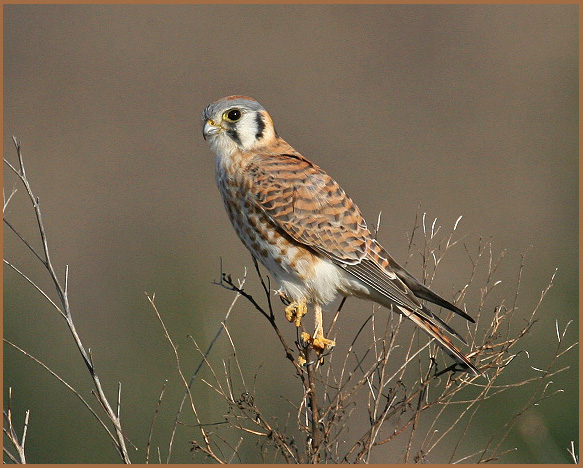
I’ve been away from the notebook and pen for some time tying up some loose ends. I’ll try to get you up to speed. Over the last few weeks things have been slow. The adults have chased off all of their young on both sides of “the rock.” Yesterday there were five Red-tailed Hawks circling the rock up high. Both pairs of falcons were busy chasing them with a lot of vocalizing and high speed stoops.
A young female Kestrel circled the rock from seaward passing right in front of the male and female resident falcons and they did not give chase. The Kestrel, previously known as a sparrow hawk, landed in a bare willow at the top of a rock sprawl and spent twenty minutes just looking around still in plain sight of the falcons and they still did not give chase. The Kestrel left by way of the sand spit, probably a juvenile looking for a home.
The first of the migrating birds of prey have started to arrive along the Central Coast of California. White-tailed Kites, Ferruginous Hawks, Merlins, Cooper’s and Sharp-shinned Hawks. A few flocks of ducks, but no geese yet in the estuary.
Heather has been supporting the eye surgeons from here to UCLA with her fourth lens replacement to come next week. We all wish her the best of luck.
Happy trails, Bob
Posted in falcon, juvenile, Morro Rock
Tagged falcon, invaders, juvenile, Morro Rock, other birds
3 Comments
You don’t need a $10,000 lens…
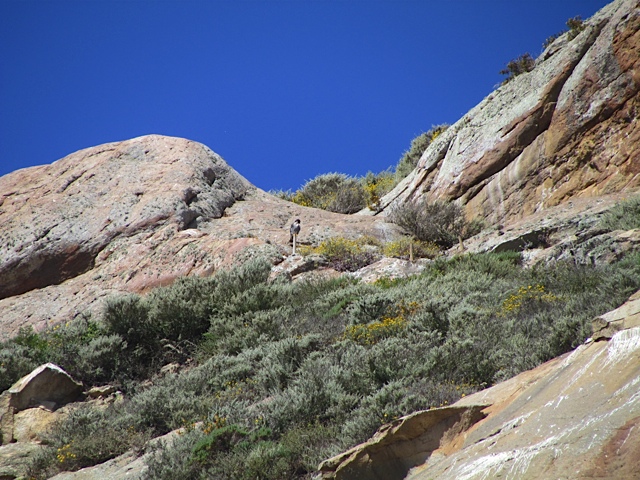
Earlier I answered a letter to a blogger and mentioned most photographers use 400, 500 and 600 mm lenses. I don’t mean to disappoint other photographers who cannot afford these very expensive lenses. The photograph above was taken with my Canon SX 35, a $375 “point and shoot” at 200 yards. In the center of this photo is a peregrine sitting on a post high up on Morro Rock. As you zoom in on this photo, you can see what $375 can do. Good luck with yours! ~Bob
Best times to photograph peregrines at Morro Rock, Morro Bay, CA.
Hi Randy, You asked about the best season to watch and photograph the falcons. My favorite time is January, February and March. This is the time you’ll see high speed acrobatics by the tiercel during this courtship and breeding time. … Continue reading
Posted in Morro Rock
Tagged breeding, courtship, Morro Rock, peregrines, photography
Leave a comment
Madame Rue…
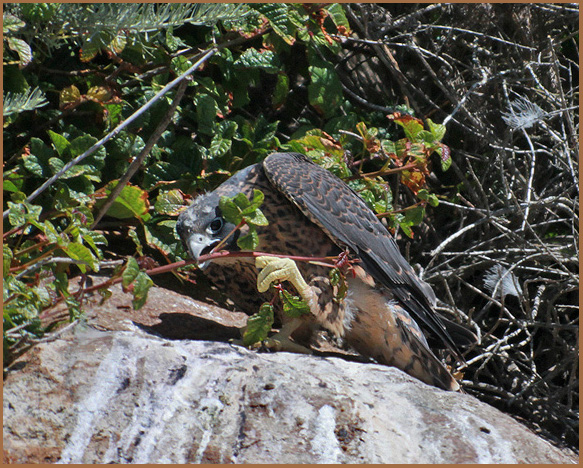
This is the sixth in a series of tales about the “famous and not-so-famous birds of Morro Rock.”
She was a fledgling falcon just out of the nest her first day. She was one of three chicks hatched that spring of ’08 on the south side of Morro Rock. Nothing special or unusual about her appearance or abilities, just a “plain vanilla” falcon until she landed on a narrow ledge on her first flight. The ledge and the rocks behind were covered with foliage, a nice spray of yellow flowers and some green vines. A nice backdrop for photos. If she were a bull they would call her “Ferdinand,” but with the floral above and around her she looked like a gypsy until we saw her eating the vine growing around her. Three leaves on a stem, it must be poison oak. Every one was astounded to see this. In the few months she was around the rock, she did well being fed by her parents, but we still caught glimpses of her with her favorite snack. She was given the name Madame Rue, you know “the gypsy with the gold capped tooth.” She’s got a rock with some flowers and some vines (“selling little bottles of …….”)
Happy trails, Bob P.S. If you know the rest of the lyrics you’re showing your age!
Posted in chicks, falcon, juvenile, Morro Rock
Tagged chicks, falcon, feeding, juvenile, Morro Rock, peregrines
1 Comment
A healthy happy peregrine…
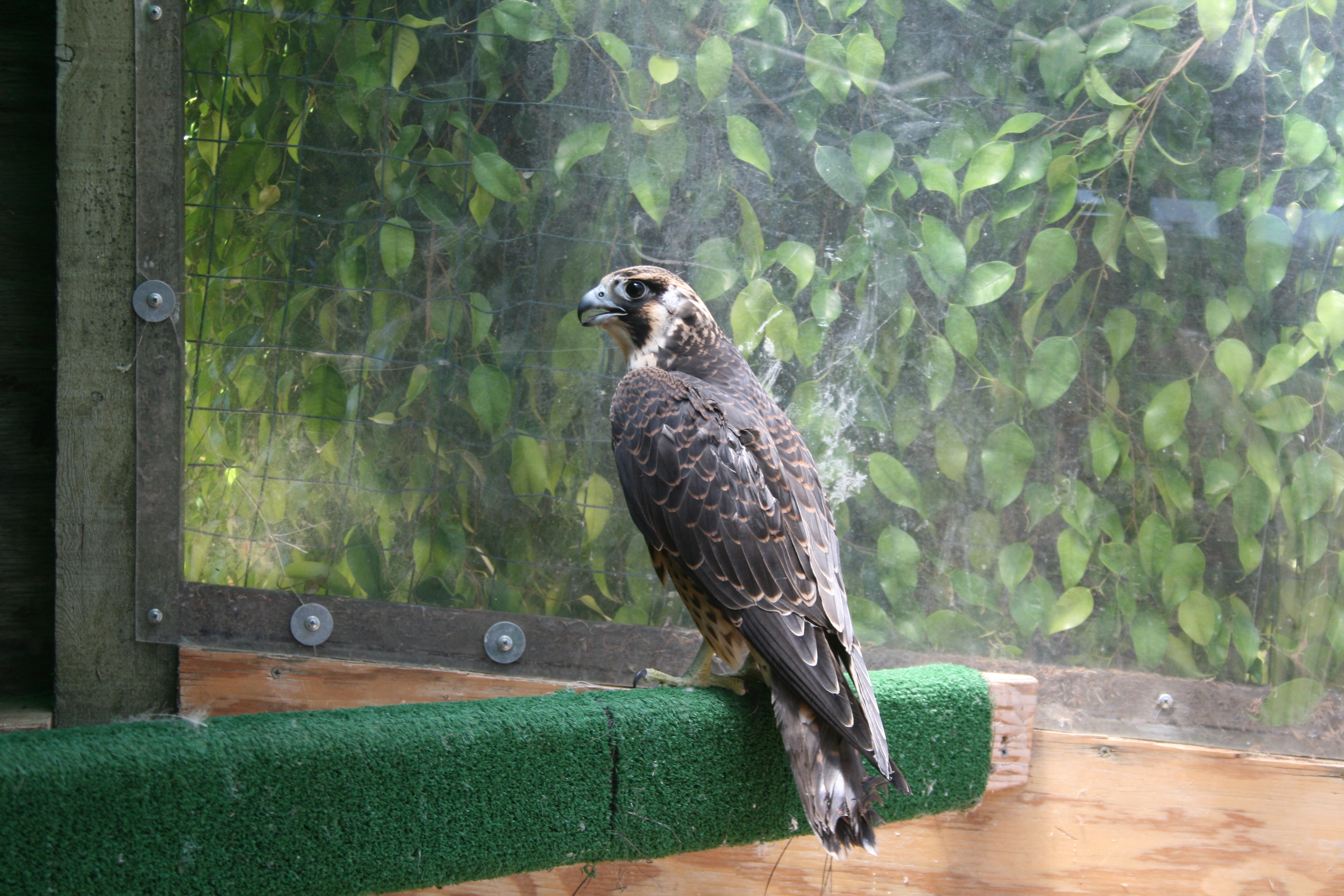
Photo by Jeri Roberts of the peregrine just before release..
Rehabilitation has done wonders for our peregrine juvenile who after release is now soaring over the sand-spit beyond Morro Bay hunting and surviving on her own. A true success story. ~Heather
Posted in falcon, hunting, juvenile
Tagged accident or injury, falcon, feeding, hunting, juvenile, peregrines, survival
Leave a comment
Transfer to another place…
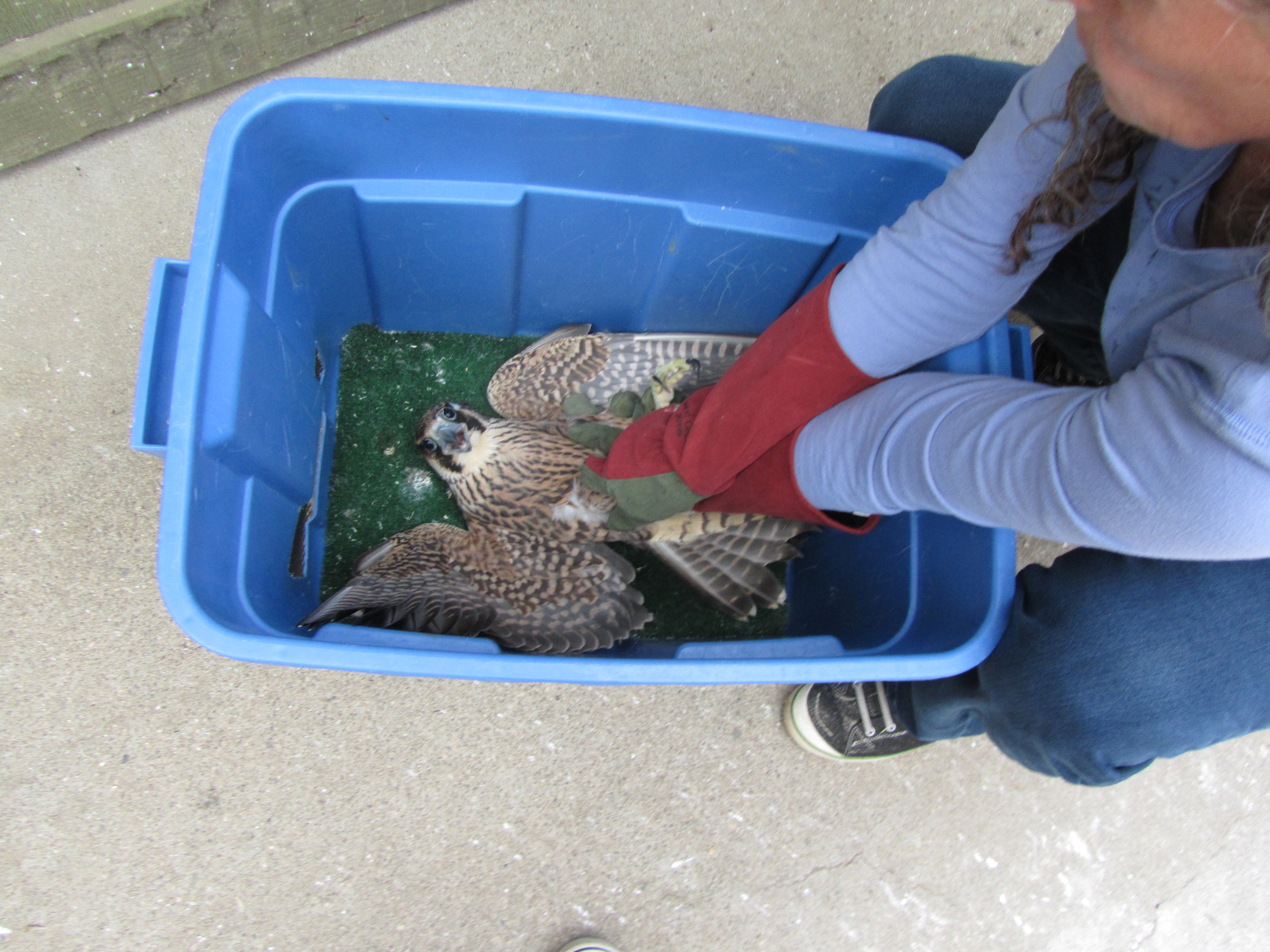
Photo by Jeri Roberts’ assistant
Here is a photo showing the gentle care by Jeri of the juvenile when it was to be moved to another location. Gloves are always used for protection. ~Heather
Posted in falcon, juvenile
Tagged accident or injury, falcon, juvenile, peregrines, survival
Leave a comment
Previous days of recovery…
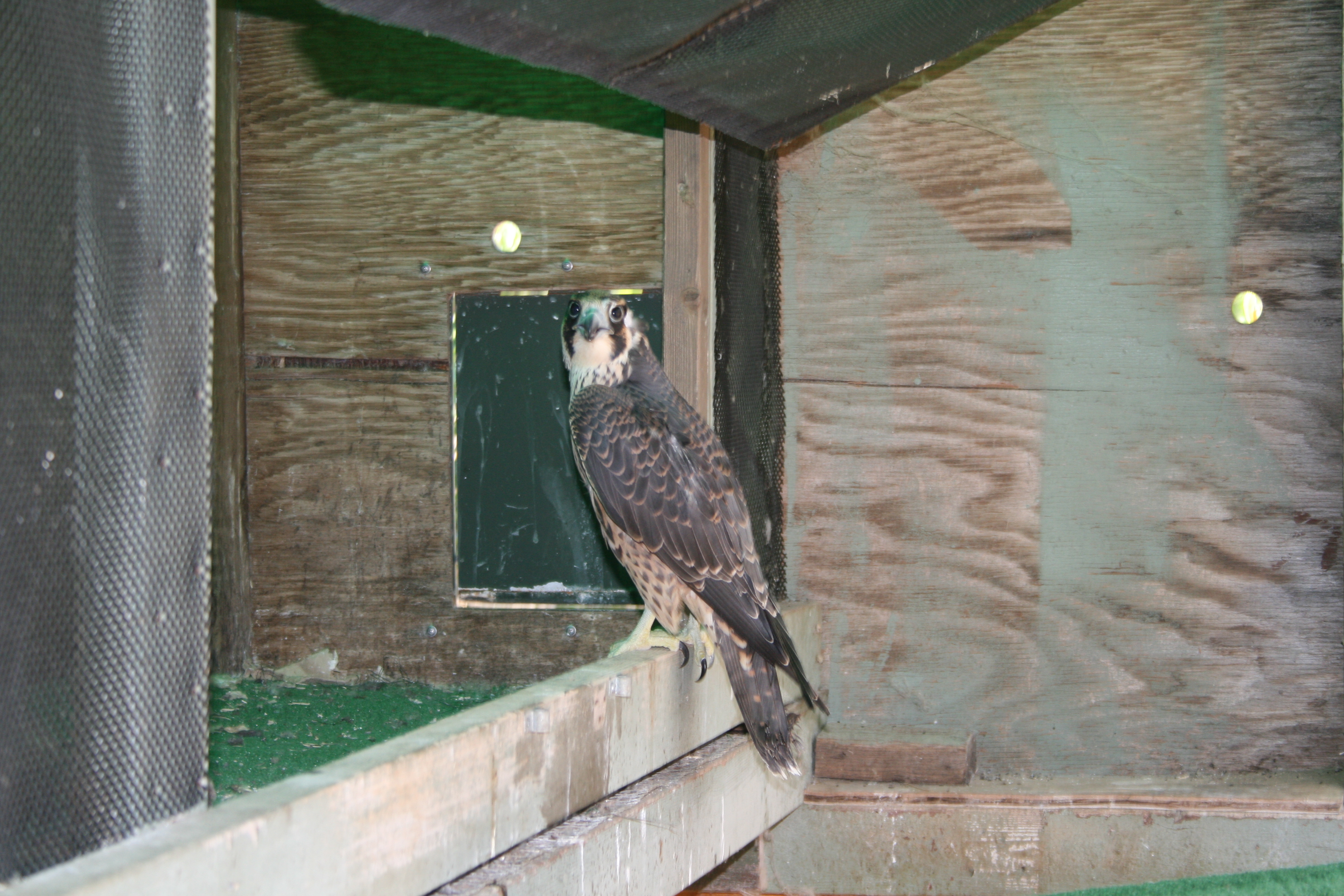
Photos by Jeri Roberts.
I’m adding a few photos to show how Jeri Roberts rehabilitated the peregrine juvenile. It has since been released. ~Heather
Here is another photo. The one where she is perched again shows the feed door (old dog door) where I can deliver food without being seen and she is going into smaller caged area within the larger flight cage that has shade cloth on it that can act like a “cave” that she seemed to like for eating and sleeping sometimes. ~Jeri
Posted in falcon, juvenile
Tagged accident or injury, falcon, feeding, juvenile, peregrines, survival
Leave a comment
Peregrine on the wing…
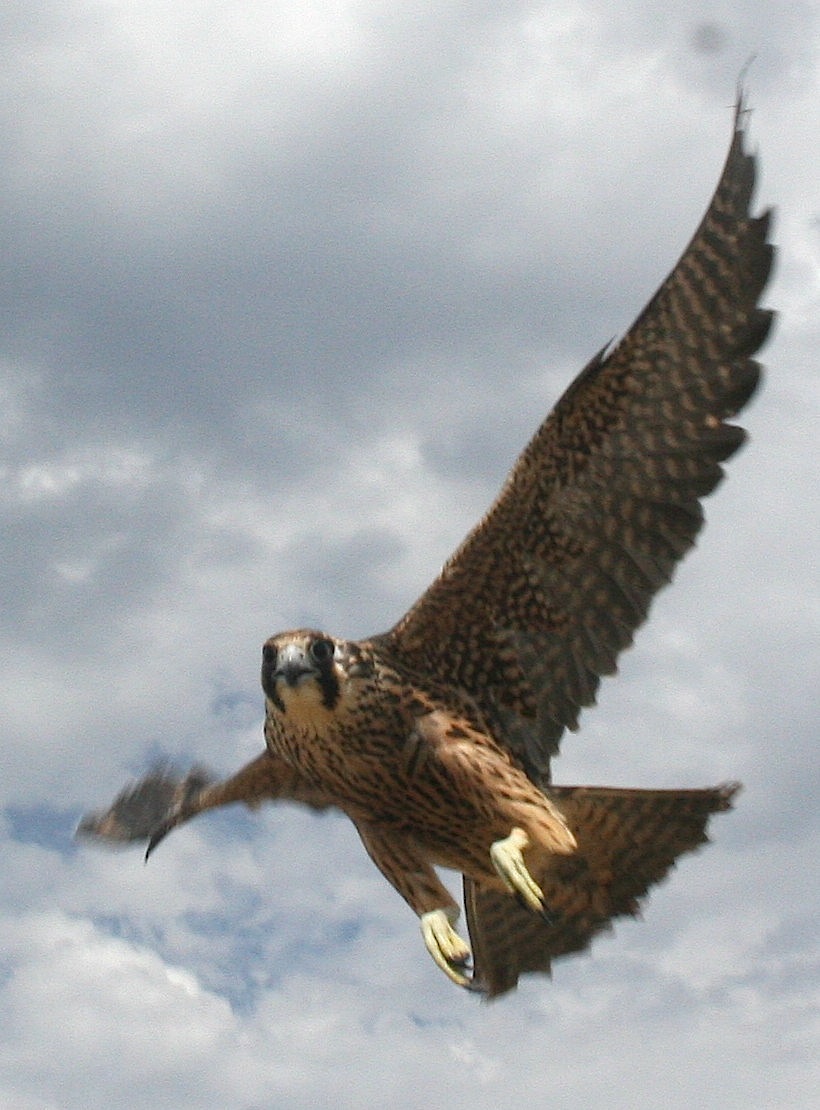
Article and photo by Neil Farrell, Tolosa Press
The article in the following post is what locals read when the Bay News was delivered about town. The people attending the release of the juvenile were Jeri Roberts, skilled rehabilitator of falcons, Brian Roberts, her husband, Bob Isenberg, of Pacific Coast Peregrine Watch, Joyce Cory, birdwatching blogger, Neill Farrell, writer, Jeremiah and Jason of the Harbor Patrrol and me. How fortunate we were to see this exciting event. ~Heather
Posted in falcon, juvenile, Morro Rock
Tagged accident or injury, falcon, juvenile, Morro Rock, peregrines, survival
Leave a comment

